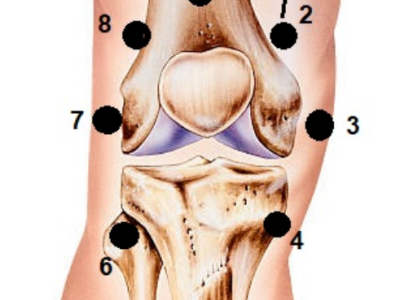Knee Osteoarthritis Electrical Impedance Measurements

- Citation Author(s):
-
Carlos Rengifo
- Submitted by:
- Carlos Rengifo
- Last updated:
- DOI:
- 10.21227/m8ke-dq37
- Data Format:
 260 views
260 views
- Categories:
- Keywords:
Abstract
Abstract—This study proposes a multiclass model to classify the severity of knee osteoarthritis (KOA) using bioimpedance measurements. The experimental setup considered three types of measurements using eight electrodes: global impedance with adjacent pattern, global impedance with opposite pattern, and direct impedance measurement, which were taken using an electronic device proposed by authors and based on the Analog Devices AD5933 impedance converter. The study comprised 37 participants, 25 with healthy knees and 13 with three different degrees of KOA. All participants performed 20 repetitions of each of the following five tasks: (i) sitting with the knee bent, (ii) sitting with the knee extended, (iii) sitting and performing successive extensions and flexions of the knee, (iv) standing, and (v) walking. Data from the 15 experimental setups (3 types of measurements × 5 exercises) were used to train a multiclass random forest. The training and validation cycle was repeated 100 times using random sampling. At each of the 100 cycles, 80% of the data were used for training and the rest for testing. The results showed that the proposed approach achieved average sensitivities and specificities of 100% for the four classes in the extension, cyclic, and gait tasks. This suggests that the proposed method can serve as a screening tool to determine which individuals should undergo X-rays or magnetic resonance imaging for further evaluation of KOA. Bioimpedance measurements (BIM) were conducted using a custom-designed eight-channel electronic prototype previously developed. The BIM system incorporates an AD5933 impedance converter, which generates a 50 kHz alternating voltage signal. This signal is then converted intoa 1 mA alternating current using a voltage-controlled current source. Two sets of 74HC4067 multiplexers are utilized, with one pair selecting the electrodes for current injection, and the other pair selecting the electrodes for voltage measurement. The electrodes were placed in the frontal plane around the knee and forming a circle.
The bioimpedance measurement system is described in this link: https://doi.org/10.1016/j.ohx.2022.e00274
Instructions:
This dataset has six columns, which are:
1) exercise. This is a categorical variable with the task performed by the participant during the impedance measurements (flexion, extension, cyclic, standing, and gait).
2) participant. This categorical variable is the ID of the participant (p1, p2, ... p38)
3) affectation. This categorical variable is the degree of osteoarthritis of the participant (g0, g1, g2, g3). g0 indicates no affectation, while g3 is the highest degree of affectation.
4) frame. It is an integer that indicates the set of measurements to which the value of the impedance column belongs.
5) pattern. This character string indicates which electrodes were used for current injection and which electrodes were used to measure voltage. For example, I34_V67 indicates that current was injected through electrodes 3 and 4, and the voltage was read at electrodes 6 and 7.
6) impedance. This is an integer number with the impedance read by the device.








In reply to Hello Mohammad, by Carlos Rengifo
.
.